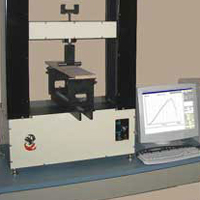Materials Testing – Everything You Need to Know
Materials testing is the process of determining the mechanical and physical properties of a material. This information can be used to select the appropriate material for a given application, to determine the strength of a material, or to identify flaws in a material. There are a variety of methods for performing materials testing, including tensile testing, compression testing, hardness testing, and fracture testing.
What are the different types of materials testing?
There are many types of material testing, some of which
are:
-Tensile Testing: This tests the strength of a material
by pulling on it until it breaks.
-Fracture Mechanics: This tests the resistance of a
material to fractures.
-Compression Testing: This tests the material's
resistance to being compressed.
-Hardness Testing: This tests the material's resistance
to being scratched or dented.
-Brittleness Temperature: This tests the material's
temperature at which it becomes brittle.
What are the benefits of materials testing?
There are many benefits to materials testing. One of
the most important benefits is that it can help you to avoid failures in your
products. By testing your materials, you can identify any potential problems
before they cause failures in your products. This can help you to save money by
avoiding costly product failures.
Another benefit of materials testing is that it can
help you to improve your products. By identifying the weaknesses in your
materials, you can work to improve them. This can help you to create a better
product that is more resistant to failure.
Finally, materials testing can help you to verify the
quality of your materials. By ensuring that your materials meet certain
standards, you can be sure that your products are of high quality. This can
help you to build a reputation for high-quality products.
How are materials testing performed?
Materials testing is an important part of quality
assurance. In order to ensure that products meet the required specifications,
it is necessary to test the materials used in their construction. There are a
variety of methods that can be used to test materials, depending on the type of
material and the desired results.
Some of the most common methods of material testing
include chemical analysis, mechanical testing, and physical testing. Each of
these methods can be used to determine different aspects of the material's
quality. For example, chemical analysis can be used to determine the chemical
composition of a material, while mechanical testing can be used to measure the
material's strength and durability.
Physical testing can be used to measure a material's
dimensions, density, and other physical properties. By using a combination of
these testing methods, it is possible to get a complete picture of a material's
quality and determine whether it meets the required specifications.
.jpg)



.jpg)
Comments
Post a Comment